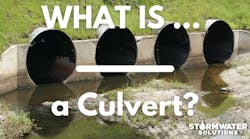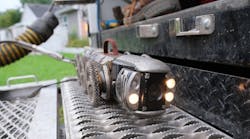Cretex Specialty Products, www.cretexseals.com, 800.345.3764
In May of 2017, the Michigan Department of Transportation (MDOT) discovered pavement failures in the west-bound lane of I-94 in New Buffalo, Michigan, near the weigh station just inside the Michigan border. Further investigation revealed that a 1,000-foot, 72-inch RCP conduit under the interstate highway had joint separation issues, which was allowing the sandy native soil to migrate into the pipe, undermining the roadway bedding above. MDOT engineers consulted with the American Concrete Pipe Association to come up with some options for repairing the joints. MDOT engineers were referred to a representative of Cretex Specialty Products who assisted by recommending the Cretex HydraTite Internal Pipe Joint Seal System.
In early June 2017, a site visit by Cretex representatives was conducted and the number of seals and appropriate seal widths were determined by walking the pipeline and physically inspecting each joint. MDOT urgently needed to get the repairs done, which consisted of pipe-joint seal installation and grout injection from the surface to help stabilize the soils around the pipe. The job was bid on July 7, 2017. A large underground utility contractor from Grand Rapids, Michigan, was awarded the job and construction began Aug. 21, 2017. The contractor surface prep and installation teams completed the installation of the 115 joint seals in approximately one week.
Post installation inspection generated a punch list that required re-tightening of a small number of seals found to be still leaking, but once that was competed, all joints had been sealed. The ground stabilization grouting was completed, the pavement settlement has stopped, and the life of this conduit has been extended for many years to come.







